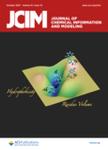版权所有:内蒙古大学图书馆 技术提供:维普资讯• 智图
内蒙古自治区呼和浩特市赛罕区大学西街235号 邮编: 010021

作者机构:Washington Univ Sch Med Dept Pathol & Immunol St Louis MO 63110 USA
出 版 物:《JOURNAL OF CHEMICAL INFORMATION AND MODELING》 (化学信息与建模杂志)
年 卷 期:2014年第54卷第1期
页 面:37-48页
核心收录:
学科分类:1007[医学-药学(可授医学、理学学位)] 07[理学] 0703[理学-化学] 0812[工学-计算机科学与技术(可授工学、理学学位)]
基 金:Pathology and Immunology Department of Washington University in St. Louis
主 题:revealing information structures REVEAL chemical compounds molecules Information Theory private data Optimization algorithms
摘 要:In this study, we propose a new, secure method of sharing useful chemical information from small-molecule libraries, without revealing the structures of the libraries molecules. Our method shares the relationship between molecules rather than structural descriptors. This is an important advance because, over the past few years, several groups have developed and published new methods of analyzing small-molecule screening data. These methods include advanced hit-picking protocols, promiscuous active filters, economic optimization algorithms, and screening visualizations, which can identify patterns in the data that might otherwise be overlooked. Application of these methods to private data requires finding strategies for sharing useful chemical data without revealing chemical structures. This problem has been examined in the context of ADME prediction models, with results from information theory suggesting it is impossible to share useful chemical information without revealing structures. In contrast, we present a new strategy for encoding the relationships between molecules instead of their structures, based on anonymized scaffold networks and trees, that safely shares enough chemical information to be useful in analyzing chemical data, while also sufficiently blinding structures from discovery. We present the details of this encoding, an analysis of the usefulness of the information it conveys, and the security of the structures it encodes. This approach makes it possible to share data across institutions, and may securely enable collaborative analysis that can yield insight into both specific projects and screening technology as a whole.